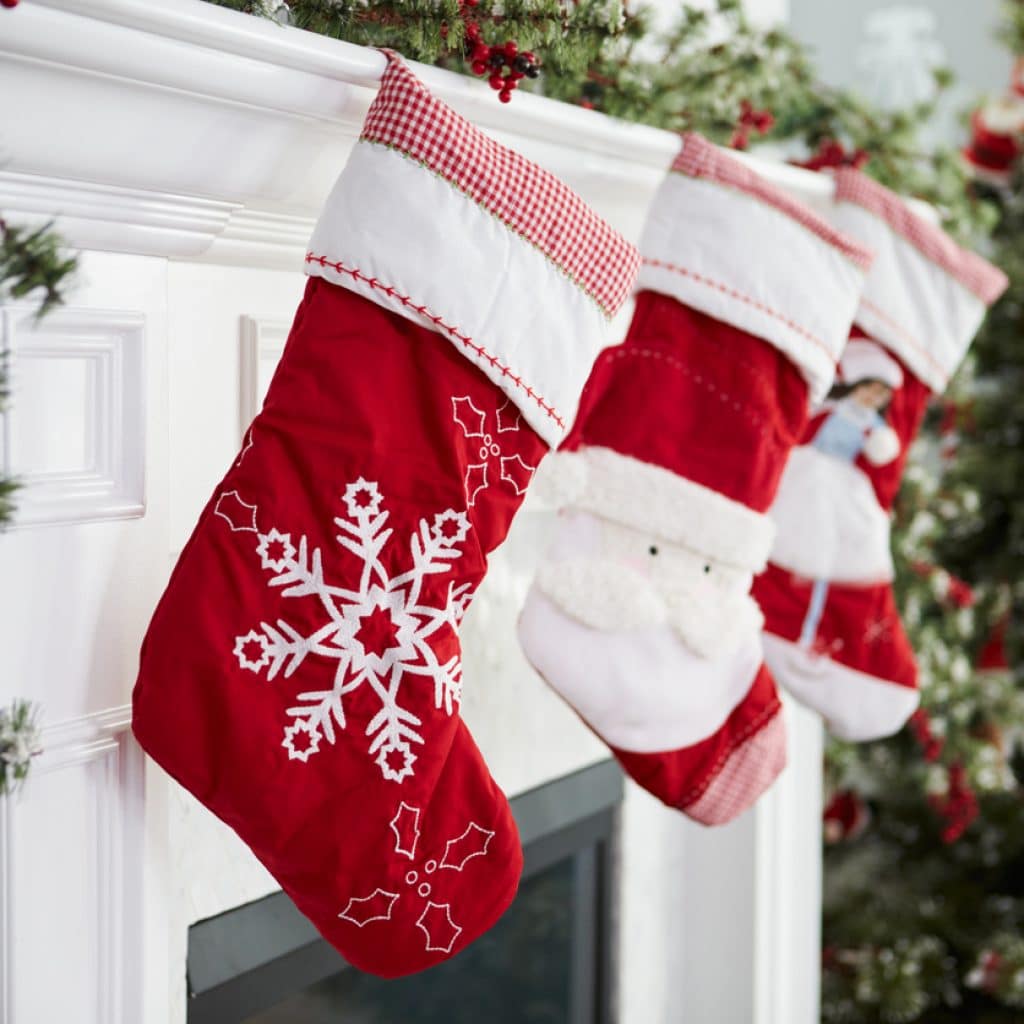In Part 1 of this series, we learned about Christmas being banned in America, where the character of Santa came from, and how the first Christmas carol came to be. Today, we’re back with even MORE fun facts about the history of more than a dozen holiday traditions.
1. The name “Kris Kringle” evolved from many cultures before it finally belonged to Santa.
The name Kris Kingle is a variation on the German word Christ Kindel, which meant Christ child. When German immigrants brought this to America, the English mispronounced it and later applied it to the dutch idea of St. Nicholas which grew into the figure of Santa Claus.

2. We have Christmas carols because people tired of Latin songs.
The word carol originally meant to dance in a ring and sing. At the beginning of the 14th century, the first religious carol was written and sung. Historians say the religious carol came into being because people were tired of church music in Latin. Carols gained their greatest popularity in England where musicians came door to door playing and singing carols, which is still today a holiday tradition.
3. A possible reason why December 25th was chosen to celebrate Christmas.
The gospels tell of the birth of Christ, but no date is given. The ancients celebrated the nativity on March 25th as the festival of spring paying tribute to the return of life to the soil. After many arguments and debates, it was decided to add nine months to March 25th. That made it December 25th, the date on which Christians have celebrated Christmas.
4. Stockings originated from the ancient legend of Bishop Nicholas.
Hanging stockings over the Chimney is believed to have originated with Bishop Nicholas who generously gave dowries for three daughters of a nobleman who had lost his fortune. St. Nicholas is said to have thrown bags of gold into the house and each fell into a stocking that had been hung near the chimney to dry. Stockings on the chimney, a holiday tradition.
5. A holiday kiss under the mistletoe had peace-making power.
Centuries ago in Northern Europe, mistletoe was thought to be a sacred plant. Considered so powerful, it was said, that if enemies met under its branches, they would cease to fight. In many churches, mistletoe was used to start the kiss of peace and passed through congregations to heal disputes. A kiss under the mistletoe, one of our friendlier holiday traditions.
6. Pope Julius I may have decided Christmas would be on December 25th.
Another theory about the date of Christmas is that during the days of the early church, people were observing the nativity at random from January 6th to May 20th, and many dates in between. The controversy threatened to tear the church apart. In 350 AD, Pope Julius The First made his announcement: Christmas was to be December 25th. On that day in 353, the nativity was observed and became a holiday tradition.
7. The first nativity scene originated in Italy.
The nativity scene originated in the year 1223 by an Italian monk named Francis to make Christmas more meaningful for his parishioners. St. Francis of Assisi set up a life-like scene of a baby in a manger with Mary and Joseph. From Greccio, Italy, the idea spread throughout Europe, and what began as a very simple way to dramatize the birth of Jesus has today become a very familiar holiday tradition.
8. Martin Luther started the tradition of having a Christmas tree.
The Christmas tree is said to have originated with the protestant reformer, Martin Luther. One night while walking through the woods, Martin Luther was so enthralled with the beauty of stars shining through the branches of evergreens. He wanted to preserve the scene for his family. Taking a tree into his home and decorating it with candles, it was, as legend has it, the beginning of a holiday tradition.
9. The author of “Twas The Night Before Christmas” wrote the poem for his children.
The words of this beloved Christmas poem were written in 1822 by Dr. Clement Clark, a Hebrew scholar. Dr. Clark wrote this poem for his children, calling it “A Visit From Santa Claus.” As a scholar, he didn’t put much stock in this work until 16 years after it was published without his permission. When at that time, Twas the Night Before Christmas became a popular success, and is today a holiday tradition.
10. The holiday greeting “Merry Christmas” came from Charles Dickens in the Christmas Carol.
Merry Christmas is used exclusively during the holiday season. We don’t wish anyone a merry anything else. The phrase was created by Charles Dickens in the Christmas Carol. And just like the top-hatted muffled carolers under the lamppost, Merry Christmas is one of our many images inspired by the pen of Charles Dickens, and has today become a holiday tradition.
11. For Victorians, Christmas was a way to deal with guilt.
During Victorian times, the social conscious of the growing middle class developed a concern for the conditions of the poor. Christmas provided the opportunity to promote charity and help for the needy. It was a time of the year when you could expect an outpouring of generosity and goodwill toward men. Perhaps the most important and universally accepted holiday tradition.
12. Making noise at New Years has a dark history behind it.
When we blow horns, shake noise makers, and ring bells, we are actually driving out evil spirits. At least that is what people have believed through the centuries. In Switzerland, boys and girls march through the street beating kettles. In parts of Scotland, it is a custom to sing loudly while going from house to house. All to drive out evil spirits and welcome the new year, a holiday tradition.
13. New Year’s Bowl Games follow an ancient tradition.
From the beginning of recorded history, man has been observing with elaborate games the changing of the years and seasons. Winter symbolized death while spring was life. This life struggle was often played out in elaborate games and pageants, sometimes amounting to actual battles. So the next time someone says it’s not life or death, remember, it’s a holiday tradition.




I’m enjoying reading these, thanks for sharing! Oh…and Merry Christmas!